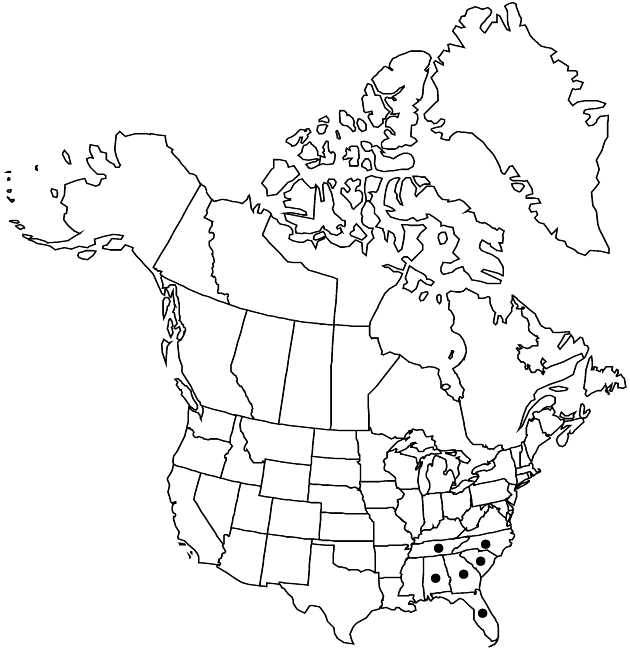Silphium asteriscus var. dentatum
Fl. South. U.S., 221. 1860.
IllustratedEndemic
Basionym: Silphium dentatum Elliott Sketch Bot. S. Carolina 2: 468. 1823
Synonyms: Silphium asteriscus var. angustatum A. Gray Silphium elliottii Greene Silphium incisum Small Silphium nodum
Treatment appears in FNA Volume 21. Treatment on page 82.
Revision as of 22:03, 29 July 2020 by imported>Volume Importer
Plants 50–150 cm. Leaves: basal caducous; cauline opposite or alternate; faces hirsute, hispid, or scabrous. Paleae puberulent. Ray-florets 8–13. Disc-florets 35–120.2n = 14.
Phenology: Flowering summer.
Habitat: Meadows, open forests, along roadsides
Elevation: 0–1000 m
Distribution

Ala., Fla., Ga., N.C., S.C., Tenn.
Discussion
Varieties dentatum and angustatum are variable in the character of stem vestiture, have overlapping geographic ranges, and therefore are best treated as one variety.
Selected References
None.
Lower Taxa
None.
"broader" is not a number.
... more about "Silphium asteriscus var. dentatum"
introrse +
connate +
herbaceous +
acute;acuminate +
scarious +
absent +
hirsute +
papillate +
bristlelike +
continuous +
caducous +
simple +
elliptic +
ovate;falcate;ovate;falcate;lanceolate +
winged;ribbed;winged;ribbed +
1;15 +
stigmatic +
absent +
zygomorphic +
yellow +
winged +
dimorphic +
staminate +
staminate +
straight +
distinct +
proximal +
1;5 +
bisexual +
dispersed +
singly +
discoid +
indeterminate +
surrounding +
campanulate;hemispheric +
deltate +
2-carpellate +
inferior +
attached +
anatropous +
puberulent +
persistent +
fragile +
falling +
absent +
tough +
thick +
absent +
connate +
persistent +
distinct +
falling +
Fl. South. U.S., +
1860 +
pistillate +
absent +
fertile +
paleate +
flat;slightly convex +
fibrous +
exalbuminous +
modifed +
2;3 +
alternate +
branched +
erect +
terete +
continuous +
2-branched +
papillate +
Silphium asteriscus var. dentatum +
Silphium asteriscus +
variety +
cylindric +
narrow +
much shorter +
cylindric +
shorter to longer than campanulate +
perennial +